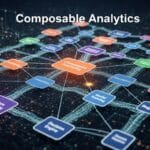Discussions about the meaning of data and information is not new, as data managers have debated the semantics of data, information, knowledge, wisdom for a long time!
Discussions about the meaning of data and information is not new, as data managers have debated the semantics of data, information, knowledge, wisdom for a long time!
A few years ago I was doing research on economics of information and I came across a book by Harrington, J. (1991) titled “Organisational structure and information technology”, published by Prentice Hall International. Harrington observed that data are facts and information is the consequence of interpretation. What is information to some is not to others. Moreover, it is the time and utility which transforms data into information. At a particular time a set of data is useful to the individual and can be described as information while at another time the same set of data may not have utility and therefore not information. The data itself has not changed in any way but the individual’s perception of that data changes in the context of time.
From an organisational point of view, data and information are driven by resource-driven paradigm and perception-driven paradigm. In the resource-driven paradigm, data is considered a corporate resource and is centrally managed. As described by Alec, corporate managers continually enhance and ‘ring-fence’ corporate data as part of the planning process with an expectation that it can be tapped at any time with the certainty of achieving a predictable value from it. Thus, the limits imposed on the organisation’s database are based upon the managers’ own perception of their value as information. On the other hand, the individual employees’ perception of their information widens because of their greater accessibility to the information across the enterprise. Hence, on the one hand, the value of information is limited by the boundaries drawn up by the managers, and on the other hand, expanded by the perceptions of the employees having access to the enterprise network of data. So, information is the consequence of a complex psychological process that transforms perceived data into usable thought inputs by using the skills of employees for the benefit of improved communication and organisational performance. Whichever theoretical framework is considered, Teradata provides support for both resource-driven and perception-driven paradigms by means of technologies, tools, applications and solutions.
In the context of the resource-driven paradigm, Teradata enables organisations to create and maintain a centralised repository of data in the enterprise data warehouse (EDW). The EDW as a corporate resource provides a single source of data on which decision makers throughout the enterprise can make educated decisions aligned with corporate strategy. In this way, the EDW combined with a cohesive data management strategy can support the vision and unify the organisation. Besides, the Teradata Enterprise Data Warehouse Roadmap is a visual planning model showing the alignment of enterprise strategic goals and objectives through a “food chain” to the supporting data in the enterprise data warehouse.
The perception-driven paradigm is supported by providing a range of business intelligence and analytical solutions. For example, at Teradata, we also recognise that the face of effective customer relationship management (CRM) is continuously changing. Beyond leveraging new communication channels, companies must also craft messages in unique ways to ensure they can penetrate the barrage of competitors’ messages to reach—and resonate with—their intended recipients. Teradata Customer Relationship Management (TRM) blends best-of-breed functionality with the latest technology and a clear understanding of the evolution of CRM to create a system that can help customer-facing employees communicate with customers in smarter, more innovative ways, across both traditional and emerging channels by leveraging enterprise data.
Teradata Meta Data Services (MDS) enhances business intelligence tools by allowing users to identify, consolidate, understand, manage and navigate technical, business and lineage metadata, and it provides facilities to integrate related metadata from other sources in effective ways.
Integrating enterprise data sources and aligning with corporate goals can be a complex task, but realising value from it can be fun too! Try shaping the enterprise model by doing this little puzzle!.






